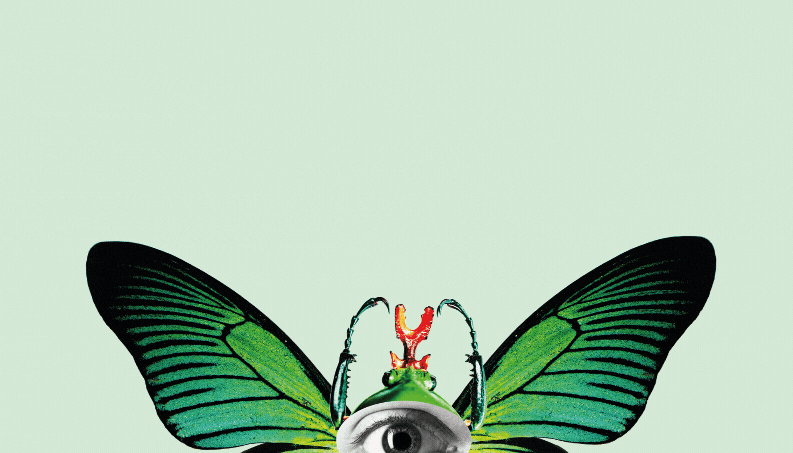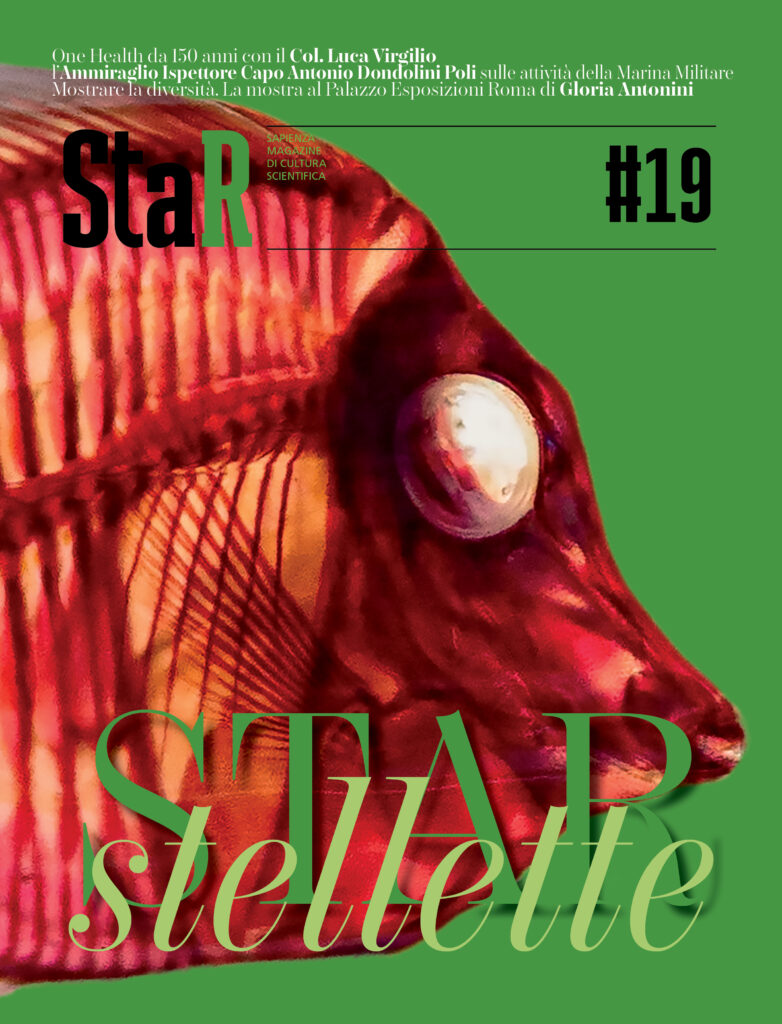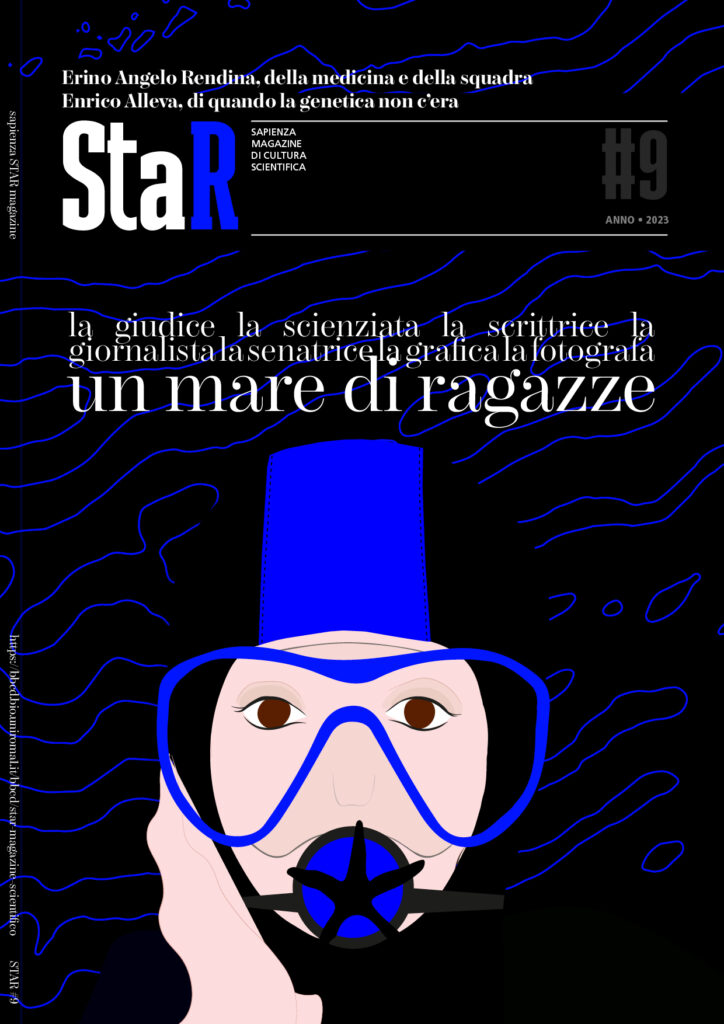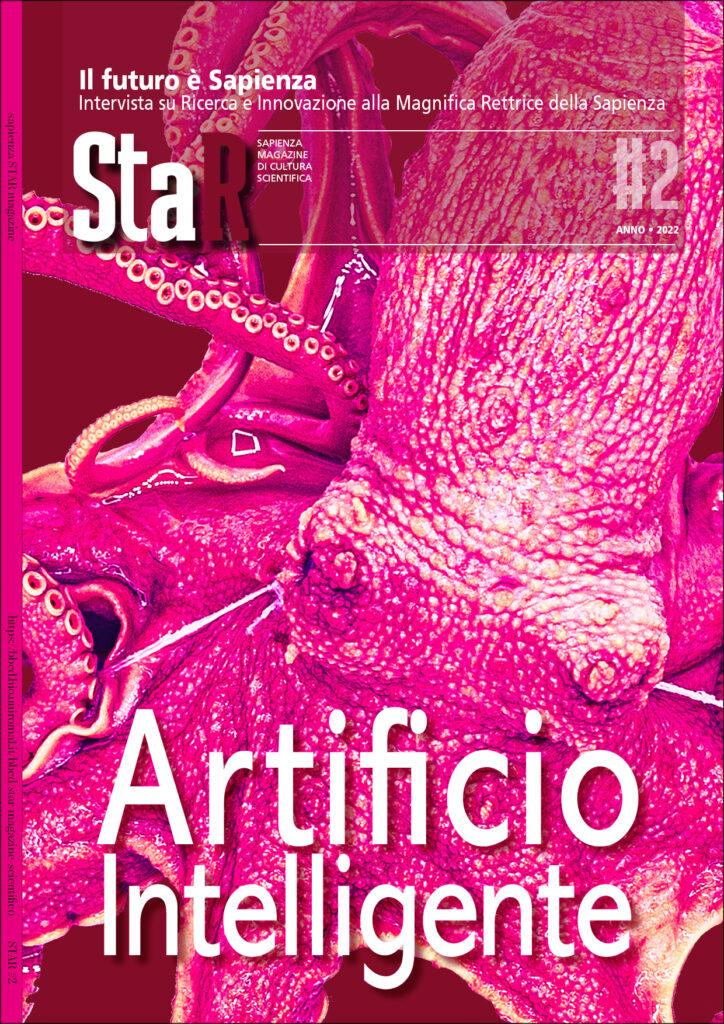
What to think about us
What will the nine scientists who will come to know, from a scientific point of view, the Department of Biology and Biotechnology “Charles Darwin” think of us? We asked them about their discoveries and the elements needed to make the best science.
With Juan Pizarro-Cerda, Paola Bovolenta, Jane Parker, Witold Filipowicz, Cornelius Gross, Josef Settele, Thomas Kaufman, George Coupland, and Chris I. De Zeeuw
by Mattia La Torre and Diego Parini
Which is the most exciting discovery of your career?
Bovolenta: It is challenging to choose one, but from an emotional point of view, it was the discovery that a protein we were working on, involved in the development of the eye, was also implicated in the pathology of Alzheimer’s. We formulated a theory and were enthusiastic when we had the first experimental results. Working on a hypothesis and finding confirmation in the data is always exciting, but, in that case, and for the first time in my scientific career, I felt I could do something for others. And the more I go on, the more this desire becomes urgent.
Coupland: This is a difficult question! We study the mechanisms that regulate the development of plants, from seed to adult. We knew that the environment was important; plants are controlled by the environment, and they constantly detect and respond to environmental cues. We focused on seasonal stimuli, the blooming process in response to them, and how plants perceive the difference between a long spring day and a short winter day. We found that flowering is controlled in the leaves. Leaves detect the length of the day and activate the expression of signalling that induces floral development at the apex of the plant. This is probably our best-known discovery.
De Zeeuw: Oh wow! This is difficult because there have been several. I would say that at least every two years, it happens to make a discovery for which I get excited. However, my first discovery was the most exciting. I had just started my PhD. We developed an innovative technology capable of simultaneously detecting neurotransmitters and neuronal fiber in a few months. It was an intense experience, especially as I had just started my PhD and I did not know what to expect. It was also very important because from then on, it was possible to reveal the neuronal connections in the brain. After this initial discovery, we explored other fields – physiology, electrophysiology, and behaviour. I currently work on the cerebellum. We have discovered how new motor skills can be acquired thanks to this “little brain” located in the back of the brain. Anyone who plays tennis, plays, dances, or has any motor skills uses their cerebellum to learn how to do it!
Filipowicz: I have worked in many research fields – RNA enzymology, splicing, transcription, small RNAs – so I had have difficulty picking just one discovery. But I can narrow my enthusiasm by briefly describing three obtained in three different fields. The first dates to the 1980s when we discovered ligase enzymes in yeast involved in the mechanism of RNA ligation in the splicing of RNA transfer (tRNA). It was an exciting work because we described a new type of phosphodiester bond. Later, by extending these studies to plant and mammalian cells, we realized that the molecular mechanisms are different in different kingdoms. These findings date back to my research activity in Poland – ed. Filipowicz is of Polish origin. When I moved to Switzerland, where I currently work, about 34 years ago, I started working on transcription. A genuinely unexpected discovery was the identification of the binding specificity of the Pol II and Pol III polymerase promoters in plants. The only distinction between the promoters recognized by Pol II or Pol III is a difference of one DNA helix turn in a space between two identical elements so that by inserting or deleting a single helix, the specificity of the two polymerases can change. We also found that this difference is the result of evolution. The latest discovery, the most recent, is linked to one of the crucial decisions in my life that I made about 20 years ago, which is to start working on RNA interference and microRNAs (miRNAs). We have made important discoveries on how DICER cleaves double-stranded RNA. We defined the mechanism of translation repression. We also found that miRNA turnover in the brain is much faster than in other tissues. All of these discoveries were almost accidental… I always like these unexpected discoveries… because if you are prepared for what you will discover, or if you want to find something specific, you will not come across something interesting.
Gross: This is a good question. Obviously, several discoveries got me excited. The most surprising finding, accompanied by a lot of excitement, was on the microglia. Microglia cells are non-neuronal cells that migrate to settle in the brain during development. They are the only cells in the brain that are always moving. We have found that they play a role in the phagocytosis process, in the elimination and modification of synapses. This hypothesis was already being discussed in the scientific environment, but the data were not yet obtained. We wanted to manipulate the neurons; at that time, no one had tried manipulating the microglia to affect the neurons. It was a project pursued by a very good PhD student, not her main project. We also had some doubts about the project. But it was exciting when we obtained an effect on neurons by knocking out a receptor on the microglia. It then became her main project.
Kaufman: I have two in mind. The first was back in the 1980s when my “academic father”, Edward Lewis – who won the Nobel Prize in Physiology or Medicine in 1995 – worked on the bithorax complex, which controls the identity of the structures in the posterior part of the fly (D. melanogaster). Those genes in mutant flies transform the haltere into wings or generate legs on the abdomen. At that time, I was working doing genetics and developmental biology on flies, and I discovered that there is another complex, antennapedia, which controls the segmental identity in the front half of the fly. One of the most prominent genes in that complex is antennapedia, whose mutation transforms the antennae on the head of the fly into legs. Another gene called proboscopedia in whose mutant the proboscis, the mouth part of the fly, turns into legs. I remember that day in the laboratory: I was all by myself and had made the crossings and scored the flies. I suddenly realized that a cluster of genes worked, like bithorax, in the anterior part of the animal. I got very excited and started leaping around. Then I called a colleague Rob Denell, we were graduate students together, and we proposed to do an extensive genetic analysis of the antennapedia complex. There are few moments in your scientific career when you realize you have made an important discovery, and when you get one, you should cherish it. I remember it was like I was on drugs. I was so excited… The other discovery was a consequence of the first: we cloned the genes in the antennapedia complex. By analyzing those genes, we found a DNA sequence in each protein-coding part of the homeotic genes in the antennapedia complex that is conserved among all homeotic genes. Around the same time, some postdocs from Walter Gehring’s laboratory in Basel came to the same conclusions. It was quite exciting because we also found that the sequence is conserved across all animal kingdoms. I think that the discovery of the homeotic complex and the homeobox caused a rather significant “evolution” in our understanding of evolution. It was discovered that evolution is not the invention of new genes but rather the re-orchestration of the same set of genes.
Parker: “Gosh”. Most probably, the most interesting discoveries that we were involved in were on solving protein structure. The first was the structure of a complex essential for signalling in plant immunity, and that laid the foundation for understanding the mechanisms of innate plant immunity. It was 2013, and it was the EDS1 / SAG101-PAD4 complex that we solved with a colleague from the University of Cologne, Karsten Niefind. The second is what we just published in two papers together with Jijie Chai’s group, a superb protein structural chemist. Combining Jijie’s structural analyses with our genetic work, we found a long sought-after small molecule second messenger link between receptors that recognize pathogen molecules and the downstream signalling. Structural chemistry is key to understanding the nuts and bolts of a system, and Jijie’s structural work showed it so exquisitely that I am still excited thinking about it.
Pizarro-Cerda: I deal with the microbiology of pathogens and the immunological interaction between bacterial pathogens and cells. A discovery that I like to tell, concerns a project in which we had our hypothesis, built on the available literature. We were studying a molecule of a bacterium, Listeria monocytogenes, already described as hemolyzing, capable of breaking host cells, specific to the more pathogenic type of Listeria. We were trying to understand why these bacteria were so pathogenic and the role of this molecule. So, we started working on the bacteria-cell interaction and did not see any phenotypes. Nothing worked, and for months we said to ourselves: “what is going on in our experiment? Nothing works”. After that, we realized that this molecule possibly belonged to a family of antibiotics. And we wondered if this molecule had a non-hemolyzing function and if it was important for bacteria-bacteria interaction. So, we accepted that we had to change the hypothesis and look for other directions. After that, everything started working. Eventually, we found that this molecule was primarily an antibiotic capable of modulating the microbiota. Only the Listeria population that secretes this molecule can create space in the microbiota and make bacteria cross the intestinal barrier, generating a critical infection.
I like this story because that is how I think science needs to be tackled. You need to be open and humble, listen to what your results are telling you, and not insist on confirming your hypothesis. You have to admit that you can be wrong. This can take you in exciting new directions.
Settele: “Oh!” The most exciting discovery was probably the appearance of a rare butterfly species just around the corner where I lived. I discovered it at 25, it had always been there, and I had never seen it. Having found it in that particular place, a rather boring environment near the airport, was such a discovery. Not an area where you would expect natural conservation. An exciting finding, and I have been studying this species for decades.
Which is the recipe to get the best science?
Bovolenta: It takes dedication, passion and a good multidisciplinary research group, which would include mathematicians, physicists and chemists or chemists and biologists or biologists and doctors. Unfortunately, money is always a sore point. You cannot do good research without good infrastructure, without up-to-date technology, which requires investments. Especially at this time, I think that another crucial aspect is to be able to pass on to young people the importance of research, the importance of dedicating oneself to research. I have been devoting myself to basic research for many years now and I know that it is increasingly difficult to involve young people in this profession. Fewer and fewer students see research as a professional outlet.
Coupland: In biology you have to select an interesting subject. Because in biology you can do many things, but some things are biologically more interesting than others. You have to choose a problem that motivates you and can also be of interest to the research community. Then you need good colleagues, and last but not least, the problem must be solvable. In biology there are many interesting and important topics, but if you do not have the technology or methods to solve them, it will impossible to make progress. The art lies in identifying an interesting problem that is, at that moment, solvable.
De Zeeuw: Be curious. Just ask yourself simple questions: how does the brain look? How does it work? How do I sleep and why do I sleep? How is it possible that looking at your face for the first time I can imprint it, in a few seconds, in the memory, so that meeting you again tomorrow I would know you again? It is incredible how quickly we can acquire information, how efficiently we can process it, and how well we can use it. The beauty of the brain is that you can do so many things with one organ: learn to play the violin, walk, coordinate breathing, talk… All these things in a pound and a half of gel in your skull, it is stunning.
Filipowicz: It is essential to follow intuition or serendipity, because if you remain in a specific area for too long, you may miss a lot. The science you do, the science you find most exciting, it is a mission, it is a hobby. I have always argued that I do my job as a hobby, a hobby for which I also get paid – a fantastic deal. There are different kinds of scientists. One includes those scientists who dedicate their entire scientific life to a single protein or enzyme, go deeper and deeper, and understand the mechanism of individual amino acids. I could not work like this. I usually get bored after five or ten years with something I have been studying for too long. I also find it an absolute pleasure to read about a new area, because in this way I can have an original vision. Some people think that changing the topic too often is wrong because you cannot become famous by associating your name with a specific reaction or problem. But I do not care, I always need new stimuli. I believe that you should follow your intuition and have the courage to change the subject when you feel the time has come.
Gross: A crucial thing you learn over time, is to doubt the outcome of an experiment because it is usually not what you expected. The best scientists question the results: when they see something abnormal, they wonder why. Ninety percent of the experiments fail because you cannot find anything, there is no detectable signal, or the signal is dirty, but a good scientist can see something in these wrong results, too. You must be persistent, you must always question yourself, have the desire and curiosity to get an answer. It is certainly easier to put an experiment aside and do it again or even stop with that approach. You have to ask questions and be open to new explanations. This is difficult because every field of research has shared general knowledge, but you need to be that particular scientist who is always ready to see things differently.
Kaufman: You have to work hard. You have to read literature, have good colleagues and good collaborators, you cannot do everything yourself. Isaac Newton worked alone in the countryside, but we are not all that bright, and the times have changed. It is always profitable to have good colleagues and good students. Science is a collaborative effort, especially nowadays. Technology is increasingly complex, and you might need the help of chemists and engineers to tackle biological problems.
Parker: I think scientific research has changed a lot since I started. Years ago, perhaps you could feel fulfilled without confronting other colleagues. Nowadays, I believe it is almost impossible without collaboration and collaboration makes everything more interesting. It is essential to be open to new collaborations, especially if there is some technique in particular that you cannot do yourself. For example, in our work, I am a geneticist, I do genetic dissections, I create mutants and I look at phenotypes, but combining them with structural chemistry has added tremendous value.
Pizarro-Cerda: The ingredients are many. If I have to pick one, the quality of the researchers and their interaction in the working group is the most important. Science is teamwork carried out by many researchers in a laboratory within a University’s Department and often with colleagues working abroad. The quality of team interaction is therefore a vital issue. Based on open communication, this interaction must aim to build a project together, not compete. The environment where research is done is fundamental to making the best science you can achieve. In my case, I work at the Pasteur Institute in Paris, and I must say that it an excellent environment for doing science. Here there are many possibilities for interaction with people of different backgrounds, so I can often compare myself with my colleagues in cellular biology, or those who deal with biophysics, chemistry, and mathematics. It is great to develop your research in collaboration with complementary teams in a multidisciplinary environment.
Settele: Enthusiasm is fundamental. But also, continuity and credibility. This last aspect is crucial because it allows you to distinguish the real facts from the fake data. You have to study a lot to understand the difference between real data and fiction. Also, having a lot of patience is essential, but enthusiasm is crucial: if you do not love your research subject, it will be difficult to go ahead and get results.
Paola Bovolenta, Neurobiologist and Head of the Development and Differentiation Department at the Center for Molecular Biology Severo Ochoa, CSIC-UAM, Madrid, Spain
George Coupland, Plant scientist and Director of the Max Planck Institute for Plant Breeding Research in Cologne, Germany
Chris I. De Zeeuw, Medical doctor and Chairman of the Department of Neuroscience at the Erasmus University Medical Center in Rotterdam, Holland
Witold Filipowicz, Biochemist at Friedrich Miescher Institute for Biomedical Research, Basel, Switzerland
Cornelius Gross, Biologist and Interim Head of EUROPEAN Molecular Biology Laboratory, Rome, Italy
Thomas Kaufman, Geneticist at Indiana University, Usa
Jane Parker, Plant scientist at Department of Plant Microbe Interactions Max Planck Institute for Plant Breeding Research, Cologne, Germany
Javier Pizarro-Cerda, Immunologist and Head, Yersinia Research Unit, Microbiology Department, Institut Pasteur, Paris, France
Josef Settele, Biologist and Head of Department of Conservation Biology and Social-Ecological Systems Helmholtz-Centre for Environmental Research in Leipzig, Germania






















Commenti recenti